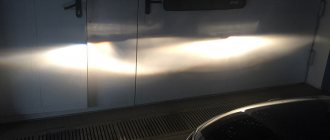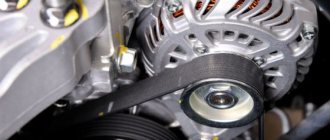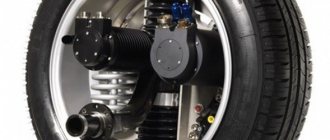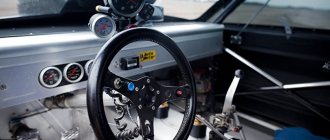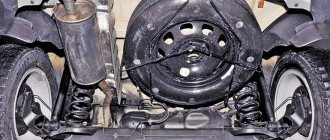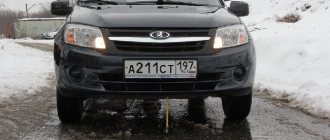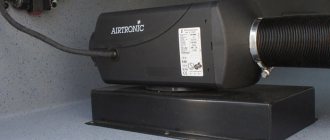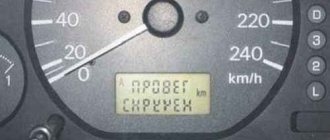Braking is considered one of the most difficult car maneuvers. Being able to correctly and timely apply various braking options in connection with the current road situation is one of the most important aspects of safe driving. Unfortunately for themselves, and sometimes for those around them, some drivers today prefer to use hard braking in emergencies. In most cases, this leads to unsafe consequences: the car loses control and increases its braking distance.
Therefore, and not only, every driver must familiarize himself and it is advisable to test in practice the various types of car braking . Better braking is not only the ability to correctly use the grip of the tires on the road and maintain the desired direction of movement of the car, but also the ability to use braking using the engine or even in the event of a brake system failure.
Types of braking
Braking can be roughly divided into types:
- partial - looks like a slight decrease in speed to a certain limit. This type of braking, unlike full braking, eliminates the complete stop of the car.
- Full;
- Service - used during normal driving. It can also be partial or complete. When performing such braking, the driver has complete control over the deceleration, time and method by which the car will be braked. The driver must also monitor the force exerted on the brake system and the comfort of the people he is transporting and the general condition of the car.
- Emergency - used mainly when there is an acute shortage of time and space. This need most often arises in emergency cases, or due to erroneous actions of the driver himself. Based on the conditions that created the need for this type of braking, and taking into account other external factors influencing this, emergency braking is usually used to ensure maximum deceleration of the car. The general condition of the car, the people being transported and the person sitting behind the wheel is not taken into account.
- Parking - used to secure the car. This type of braking is performed using a handbrake.
- Emergency – used if it is not possible to brake using other standard types of braking. In other words, when the brake system fails. Braking is performed directly by parts of the car body. In this case, it is better to try to brake the car using a tangential, rather than a frontal, body impact.
Methods of service braking of a car
Braking a car while driving can be divided into three main types:
- official,
- emergency
- and emergency.
Service braking is braking under normal driving conditions. It is characterized by smoothness and slight deceleration of no more than 4 m/s^2. It is the most common braking mode and in everyday life it accounts for more than 95% of the total number of braking events.
Emergency braking is a reduction in speed up to a complete stop when critical (non-standard) situations arise while driving.
Emergency braking is carried out when the working brake system fails or its efficiency is greatly reduced.
This article will discuss the main methods of service braking, as well as situations in which it is advisable to use one or another method.
Full stop with gear engaged.
Press the clutch to the floor and the brake pedal with the force necessary to come to a complete stop. When you come to a complete stop, you must disconnect the engine from the wheels, otherwise it will stall. One of the functions of the clutch is precisely to briefly disconnect the engine from the transmission (and ultimately from the wheels).
Then, if the situation allows, we turn off the gear and release the clutch. Some perform this braking in a different sequence: press the clutch ⇒ disengage the gear ⇒ release the clutch ⇒ press the brake and come to a complete stop. But in a number of situations this leads to a large number of unnecessary actions (such as pressing and releasing the clutch pedal).
Braking should be smooth and comfortable for the driver and passengers. The brake pedal force must be maintained at a level that slows the vehicle sufficiently for the specific situation.
To avoid a specific unpleasant dive of the car when stopping, you should at the end of braking weaken the force on the brake pedal, i.e. reduce the intensity of braking (when the car has almost stopped, slightly raise your foot on the brake pedal).
Braking followed by gear shifting is also carried out with the clutch pedal depressed.
You are driving at a speed of 40 km/h in third gear, there is a speed limit sign ahead of you - 20 km/h. Press the clutch and brake ⇒ reduce the speed to 20 km/h ⇒ at the same time engage second gear ⇒ release the brake and clutch ⇒ continue driving.
We perform similar actions when driving through artificial bumps and sharp turns (for example, at an intersection). In this case, the brake and clutch should usually be released before the bump and before the turn. It is more correct to start braking from more or less decent speeds without pressing the clutch pedal.
You are driving at a speed of 55 km/h in third gear, there is a speed limit sign ahead of you - 20 km/h. We press the brake ⇒ we begin to reduce the speed without pressing the clutch (up to ~ 30-35 km/h) ⇒ we press the clutch and continue to brake to a speed of 20 km/h at the same time we engage second gear ⇒ we release the brake and clutch ⇒ we continue driving.
Since sharp turns, for example, at an intersection, should also be made at a speed of no more than 20 km/h, so that you can turn without violating traffic rules, the procedure is the same. The actions when stopping completely are similar, we just stop without changing gear.
In an emergency, you should also start braking without pressing the clutch pedal.
Braking within one gear does not require pressing the clutch pedal at all. In this case, you can brake in one of two ways.
Using engine braking.
You are driving 35 km/h in second gear, there is a 20 km/h speed limit sign ahead. Release the gas pedal in advance, the crankshaft speed drops, and engine braking begins. If the distance is sufficient, the speed will have time to drop to the required 20 km/h. After this, lightly press the gas pedal, maintaining the required speed of no more than 20 km/h.
Braking with service brake.
You are driving 35 km/h in second gear, there is a 20 km/h speed limit sign ahead. If the distance is not enough to use engine braking, press the brake pedal and reduce the speed. After this, lightly press the gas pedal, maintaining the required speed of no more than 20 km/h.
Here are the main methods of service braking that should be mastered while studying at a driving school. And in the future, add others to them that will be better suited for certain situations.
Focus technique
After mastering the plow, braking with a stop is easy. The method is intended for performing manipulations on slopes obliquely - turning over skis or unilateral sliding.
Performing the movement:
The athlete sits down slightly, makes a sharp pushing movement forward, and straightens up (removing the load from the skis). The ankle joints rotate to turn the equipment to the side at an angle. When performing the movement, the torso and shoulders work. The braking force depends on the size of the deployed angle. For a complete stop, the ski is placed transverse to the descent. This method is used by experienced skiers.
Fall control
When it is not possible to use the stop and plow technique, moving at considerable speed along a highway with an unexpected obstacle, urgent braking is necessary. This is done using a deliberate fall. This manipulation is done in case of close approach to an obstacle. With skillful management of an intentional fall, injury is eliminated. After a fall, the skier quickly gets up and continues moving.
In an unusual situation, fall control tricks are used. The athlete sits down, trying to lean to the side or back, turning the equipment across the stroke. The athlete gets up, leaning on sticks, and then continues skating.
If the equipment crosses during fall braking, skiers lie on their backs, raise their legs up, directing the equipment to the correct position. Turning over to his side, the athlete rises.
There are situations when falling is not rational. Skiers slow down with poles (track with a lot of snow). However, this method is used by amateurs; sticks are not used in racing competitions.
Arriving at a ski resort, even a beginner, with the help of an instructor, will be able to master the necessary technique of descending with braking. Winter holidays with skis are an exciting leisure activity for adults and children.
Engine braking options
The speed of the car can be reduced without pressing the brake pedal, but simply by ceasing to press the accelerator pedal. The optimal speed for an internal combustion engine is idle speed, which is what it tends to achieve if the fuel supply is reduced. Accordingly, the crankshaft speed decreases - the car slows down. These manipulations are called engine braking.
The easiest way is engine and gearbox braking. Suitable for vehicles with manual transmission. The driver stops pressing the gas pedal and, as the car slows down, gradually lowers the gear from fifth to fourth, etc. The lower the gear, the greater the braking force. Almost simultaneously, the driver carries out several manipulations: correcting the movement of the steering wheel, changing gears, working with the clutch and gas pedals to shift the throttle. You need to switch to a lower gear when the engine reaches the appropriate speed. These indicators may differ for different models; they are indicated in the vehicle registration certificate. Downshifting too early can cause the wheels to lock, damage the transmission, or harm the engine itself.
It happens that the situation is emergency, and the main braking system has failed. It is important to use the engine braking method with force. The driver abruptly shifts from high gear to second. The load on the engine and gearbox increases many times over, which will definitely cause them to fail. Therefore, it is better to use this method only in critical situations.
As for cars with automatic transmission, everything is ambiguous. There are cars with manual control or models with built-in engine braking. And there are models where the automation blocks the driver’s attempts to use the engine as a brake, or this possibility is not provided by the developers. All information is provided in the operating instructions.
The hydraulic clutch of an automatic transmission is designed to smooth out and compensate for high loads, protecting it from damage. At the same time, engine braking efficiency is reduced. The hydraulic clutch lock-up is disengaged at speeds of around 50 km/h, but the oil damper is activated, which compensates for the increased loads and prevents damage to the transmission, especially on long descents. This increases the braking time. Abrupt switching from high gear to first is blocked by the car's electronic systems, which eliminates the possibility of increased engine braking. Therefore, if you have a car with an automatic transmission, it is safer to rely on the main braking system.
Heavy braking
This braking method is best suited if the car is moving at a speed of 100 km/h or more. Of course, it can only be used on straight sections of paved roads. The idea is that you sharply press the brake pedal to the maximum and hold it until the car begins to slide, or as drivers say, “to skid.” Next, you release the brake pedal to restore traction between the wheels and the road surface, and then slam on the brakes again. Of course, to use this method of braking, you need to practice a little. To do this, on a straight section of the road you need to accelerate the car to a speed of 60 km/h. Press the brake pedal sharply and hold it until the car maintains a straight trajectory. You must catch that moment so that the car does not skid, but at the same time brakes effectively. After a couple of trials, you can probably figure out when to release the brake pedal to restore the car's stability, and then press it again to finally stop. Having mastered this method, you will be able to stop the vehicle as efficiently and quickly as possible if an obstacle occurs, for example, on the highway.
Braking manipulations on skis - how to do it correctly
How do you brake on alpine skis? Ski braking is used to regulate speed and stop. The implementation of a stop is due to the correct placement of the equipment on the edge, maintaining an angle in relation to the movement. What determines the braking force?
- Angle level.
- Pressure on the snow cover.
- Ski edging.
Descent situations and directions dictate the rules when choosing a ski braking method. The method of stopping movement is selected based on the situation and skill. Plow braking on skis, side sliding, is used on a straight track. Half-plow and slide are used on oblique slopes.
Instructors do not limit skiers to the recommended methods of lifting, braking, or descending from the slope. Tourists can use other types of techniques at their discretion.
Slowing down at significant speed is difficult and requires a lot of effort. Athletes opt for side sliding with parallel equipment. This method is not always possible to apply. Each emergency option is selected according to the situation.
